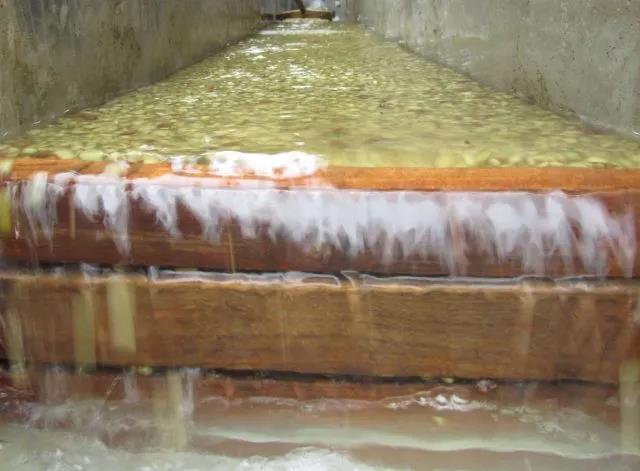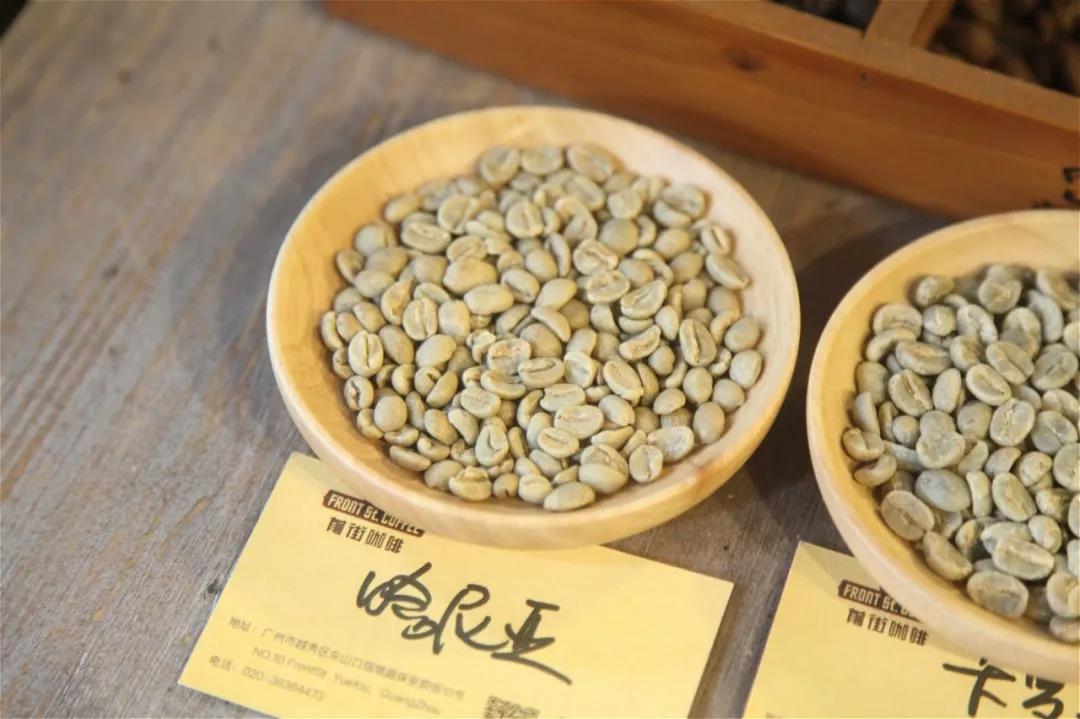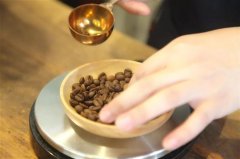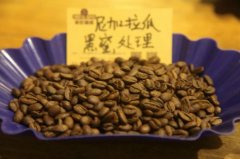Evaluation | comparison of flavor characteristics of 3 Kenyan coffees | how to make Kenyan coffee by hand?
Professional coffee knowledge exchange more coffee bean information please follow the coffee workshop (Wechat official account cafe_style)
African coffee is famous all over the world for its charming acidity and aroma, and Kenya is certainly not absent. Kenya is a tropical region, with two rainy seasons a year and two harvests, with 60% concentrated from October to December and 40% from June to August. Coffee is mainly grown in volcanic areas from the capital Narobi to the mountains of Kenya at an altitude of 1600-2100 meters. The temperature in the mountain area is lower, and there is a high concentration of phosphoric acid soil, which grows slowly, the aromatic components of coffee beans are fully developed, the sour taste of the fruit is more obvious, and the texture is harder.
At present, there are three kinds of beans in Qianjie coffee. [Carragoto] [Asalia] [Haniya] are all Kenyan beans, does it taste the same?
[producing area]
Carol Goto: Nyeri

Located in central Kenya is the site of the extinct volcano Mount Kenya. The red soil in this area breeds the best coffee in Kenya. Agriculture is extremely important here; coffee is the most important crop. Common cooperatives made up of small farmers are more common than large manors. There are two harvests in this area, but coffee from the growing season is usually of high quality.
Harvest period: October to December (main production season), June to August (by-product area)
Haniya, Azaria: Kiambu Sika Thika

The producing area in central Kenya has the highest coffee growing area in the region, and Sika is a secondary area. Located at the foot of the Aberdare Ridge, the soil is red volcanic soil, rich in organic matter. Due to the mild climate and moderate rainfall in Kiambu, coffee is grown in the form of both manors and small farmers, but the yield is relatively small.
Harvest period: October-December (main production season), June-August (by-product season)
[altitude]
Carrogoto: 1800 meters
Azaria: 1550m Musi 1750m
Haniyeh: 1525 meters
[variety]
Carragoto, Azaria: SL28, SL34

Bourbon Bourbon was first brought to Kenya for planting. In the 1950s, two excellent hybrids, SL-28 and SL-34, were selected by Scott Lab, an agricultural research institution at that time. Later, the yield of SL28 was not as high as expected, but the copper leaf color and broad bean-shaped beans had great sweetness, balance and complex flavor, as well as remarkable citrus and black plum characteristics.

SL34 is similar to SL28 in flavor, with a heavier, fuller and cleaner finish than SL28, except for the complex acidity and great sweetness of the finish. SL34 has French missionaries, bourbon, and more Tibica ancestry. Dou looks similar to SL28, but is more adaptable to sudden heavy rain. It is these two important varieties that lead us to the unique Kenyan style: strong acidity, rich taste and beautiful balance.
Haniyeh: French missionary Bourbon
French missionaries brought bourbon trees to Kenya around 1892-1893. This native bourbon tree species, known as renchMission Varietal (French missionary species), avoids scientific improvements in the planting process and retains the original flavor of bourbon.

[treatment]
Karoguto, Azaria: "double washing"

Is to adopt the cycle repeated treatment method of washing after fermentation, the best quality coffee cherries are selected on the harvest day, peeled and fermented, the fermentation time is 24 hours, and then washed with clean river water after 24 hours. Then, it is fermented again with clean river water for 24 hours, and then washed, so it is repeated 3 times for 72 hours, so it is called Kenyan 72-hour fermentation water washing treatment, referred to as K72.
In this way, the coffee beans can be fermented for a long time at low temperature, and finally dried and dehydrated, so that the beans can have a brighter, cleaner and full flavor!

Haniya: exquisite sun exposure
In the process of exquisite sunlight, the already rich and sour bourbon coffee adds solidity and sweetness. It usually takes 4 weeks or more, depending on the weather and the flavor you want to show. Care must be taken when drying, not only to avoid excessive temperature, but also to avoid moldy beans or bad smell caused by excessive fermentation.

[raw beans and baking]
Carrogoto: K72, double washing

Carragoto: the explosion develops for 2 minutes, and the furnace temperature is 191 degrees.

Azaria:: K72, double washing

The development of first explosion takes more time, which is helpful to reduce acidity and develop flavor. After an explosion, the development time is 2 minutes and 10 seconds, to 191.6 degrees.

Haniyeh: viaduct bed in Africa, solarization

Baking: the first explosion starts at about 8 minutes and 15 seconds, 186 ℃, while reducing the firepower and opening the throttle to develop the flavor, 194 ℃ in 2 minutes.

Compared with Azaria, Carragoto has the same breed and treatment, but Carlo has a relatively high altitude, a slightly harder texture, a longer overall baking time, a slower temperature rise, and an explosion point of time at 9pm 39th 28 ". The aim is to give Carrogoto enough time to develop fully.

Haniya, is a bourbon species, planting at a lower altitude, sun treatment, beans with smaller shape, slightly softer texture, slightly lower furnace temperature to avoid high temperature burns; slightly flat beans, but also faster heat transfer, earlier in the yellowing point and a burst point, more times of fire drop during the period, control the speed of temperature rise, and avoid external ripening and endogenesis. The furnace temperature is relatively high, the purpose is to have enough heat to continue the caramelization reaction, to produce more caramel, ripe fruit flavor and solid taste.
[cup test flavor]
Carogoto: fresh and clean virgin fruit, berries and plum acidity, good permeability, acidity will be sandwiched with tea and caramel aroma, the whole is very refreshing.

Azaria: wet aromas with ripe tomato and floral aromas, imported virgin fruit and black plum flavors, bright acidity, clean palate, medium body, outstanding middle sweetness, juicy, sweet raspberry and yellow sugar finish, and green tea aromas.

Haniya: dry aroma with sun fermentation, dried fruit and vanilla, sipping can drink caramel, vanilla, comprehensive fruit, solid juice, finish with berries, strong jackfruit, coffee flowers. The overall performance has a wild regional flavor of Africa, suitable for small sips and slowly taste, the complex aroma is difficult to give up.

The same method to extract cup coffee: 30 grams of water steaming, steaming time of 30 seconds, the first small water injection to 120g cut off water, slowly circle, the second stage of water injection slightly larger, injection to 225 ml of 30-120-75, the total extraction time of about 2 minutes.
Summary:
I like it sour. I recommend Azaria. It has a strong tomato flavor.
Like berry flavor, bask in Kenya Haniya
Like to have a sense of tea, Wumei sour, Carrogoto
Important Notice :
前街咖啡 FrontStreet Coffee has moved to new addredd:
FrontStreet Coffee Address: 315,Donghua East Road,GuangZhou
Tel:020 38364473
- Prev

The skill of making coffee by hand | how should I make it with three-stage extraction?
Professional coffee knowledge exchange more coffee bean information please follow the coffee workshop (Wechat official account cafe_style) fans left messages, when is the timing of this water injection, how to fill the three-stage water? Also, is the steaming time calculated from the beginning of water injection, or is it timed after water injection? First of all, the editor first explains: the editor demonstrates and suggests the parameters.
- Next

Introduction of Nicaraguan Coffee producing areas and characteristics of Nicaraguan Coffee Flavor | Baking and brewing suggestions
Professional coffee knowledge exchange more information about coffee beans Please follow the coffee workshop (Wechat official account cafe_style) the editor drank Nicaraguan coffee for the first time. It was black honey from the New Segovia processing Plant. This has spicy and herbal aromas, with dried fruit, black rice tea, slightly malic acid and sweetness on the sip, with almonds and berries on the finish. With Costa Rica
Related
- Beginners will see the "Coffee pull flower" guide!
- What is the difference between ice blog purified milk and ordinary milk coffee?
- Why is the Philippines the largest producer of crops in Liberia?
- For coffee extraction, should the fine powder be retained?
- How does extracted espresso fill pressed powder? How much strength does it take to press the powder?
- How to make jasmine cold extract coffee? Is the jasmine + latte good?
- Will this little toy really make the coffee taste better? How does Lily Drip affect coffee extraction?
- Will the action of slapping the filter cup also affect coffee extraction?
- What's the difference between powder-to-water ratio and powder-to-liquid ratio?
- What is the Ethiopian local species? What does it have to do with Heirloom native species?

